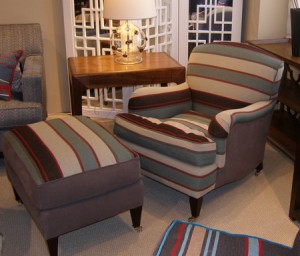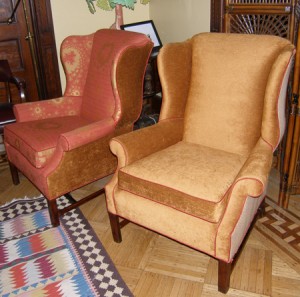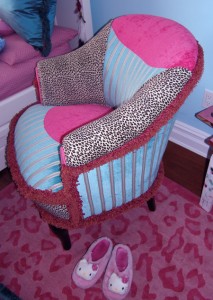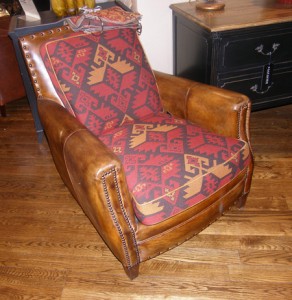 It seems to be the style now to piece different fabrics together in a single chair or sofa. Often, historically the backs of chairs might feature a jaunty mismatched pattern, say a stripe or check to contrast with the damask front. Being resourceful, I always had a lot of smaller pieces of leftover fabric and would often use them to make a whole chair or sofa cover. And now I see this style in showrooms and magazines.
It seems to be the style now to piece different fabrics together in a single chair or sofa. Often, historically the backs of chairs might feature a jaunty mismatched pattern, say a stripe or check to contrast with the damask front. Being resourceful, I always had a lot of smaller pieces of leftover fabric and would often use them to make a whole chair or sofa cover. And now I see this style in showrooms and magazines.

It can be very economical to find reasonably priced remnants- they are steeply discounted to reflect their bolt end status. Recovering an upholstered chair requires up to 8-9 yards of fabric, and a sofa 16-22 yds. These apricot and gold wing chairs were thriftily done with remnants for less than $200 and they look great as well. There were enough leftovers to make a window seat for the same room.

Often, I use a contrast welting on upholstered pieces. Not only do I like the contrast, but it can save a few yards of fabric as well, and if you are running it close to the needed amount, this option can help squeak you through. But as shown on the gold chairs, you can “marry” two different upholstered pieces by having the same piping, as I did with the red welt on these chairs. Ultrasuede makes fantastic piping, it is very durable, looks like leather, and comes in lots of colors.
I used lots of different fabrics and fluffy trim for a special chair for a little girl- we were trying to match a miniature chair she had been given as a toy. (Just to be clear, this was NOT cost effective….but did produce the desired effect).

It can be a great way to change out upholstery that is problematic, the seat cushions are soiled or ripped and the rest of the sofa is fine, or as some complain, their kids keep sliding off the leather sofa. I have suggested making just a new seat cover in a fabric that complements the whole sofa, and it is less costly than re-upholstering the whole piece.